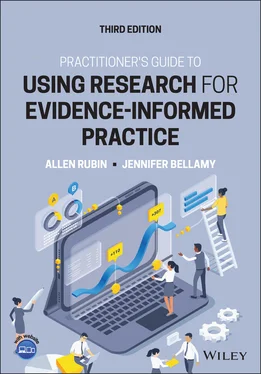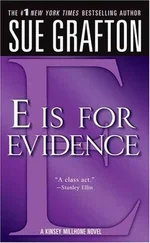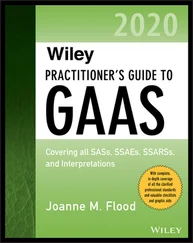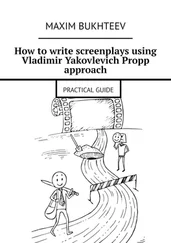1 ...8 9 10 12 13 14 ...27
1.8.1 What about Unethical Research?
Some practitioners might find the idea of having research inform their practice distasteful due to their belief that research on human subjects is often unethical. Concern about research ethics is understandable in light of the times when research on human subjects could be carried out without scrutiny of their ethics. Such studies were not limited to the notoriously inhumane medical experiments conducted by Nazis during the Holocaust. For example, the Tuskegee syphilis study began in Alabama in 1932 and lasted several decades. In that study hundreds of poor Black male sharecroppers diagnosed with syphilis were not informed of the diagnosis. Instead, the researchers studied the progression of the disease without treating it, even after the discovery of penicillin as a cure (Jones, 1981).
Later in the twentieth century additional research studies in America involving human subjects were criticized as unethical. The most notorious was Milgram's (1963, 1965) study of human obedience that examined people's willingness to harm others when following orders. Forty unwitting men were ordered to administer severe and potentially fatal electric shocks to unseen learners whenever the learner gave a wrong answer to a question. Although the shocks were not real, a danger sign and fake screams made the unwitting men think they were really hurting people. The men who followed the orders became extremely upset about what they had done, and some had seizures. Another, less notorious, study had its ethics criticized by the Dallas Morning News (1990). It was a federal welfare experiment that involved a control group of 800 employed poor people who were eligible to receive welfare. The study denied their benefits just to see how well they could live without the benefits.
In light of decades-old studies that have been criticized as unethical, is it reasonable for practitioners to want to avoid having unethical research studies inform their practice? You bet it is! Fortunately, these days it is very unlikely that the relevant studies that they would find would be unethical. That is due to the abundance of Institutional Review Boards (IRBs) that emerged in recent decades to approve or disapprove the ethics of proposed research studies involving human subjects. It is virtually impossible nowadays for a study involving human subjects to begin without first being approved by an IRB. The IRBs are virtually ubiquitous, and are affiliated with human service agencies, funding sources, and other organizations. IRB panelists can be zealous in meticulously scrutinizing the details of research proposals looking for ethically questionable procedures. Sometimes they might even be overzealous (Tufford et al., 2012). So, if you are vigilant in your concern about ethics, we applaud you. But we hope your vigilance will not prevent you from seeking research evidence to inform your practice.
Having research evidence inform your practice decisions is a lot easier said than done. In Chapter 2, we examine various feasibility constraints practitioners face in trying to engage in the EIP process. We also examine the steps in the EIP process, and you will continue to see the importance of practice expertise and idiosyncratic client circumstances and preferences in that process. Nevertheless, you might be wondering whether engaging in the EIP process will have been a waste of time if your search finds no pertinent evidence. If so, consider the peace of mind you can feel knowing that at least you searched. Had you not searched, you would not know whether there is a better way to intervene with the people who need your help. Moreover, had you not searched, you would not know whether evidence exists implying that your intervention approach might be contraindicated, and perhaps even harmful, for those folks. Consider the pride you can feel as a compassionate professional who has left no stone unturned in trying to maximize your practice effectiveness.
Although the term evidence-informed practice (EIP) is new, its underlying ideas are quite old.
One of the most important factors influencing service effectiveness is the quality of the practitioner-client relationship.
EIP is a process for making practice decisions in which practitioners integrate the best research evidence available with their practice expertise and with client attributes, values, preferences, and circumstances.
Some misconstrue EIP in an overly simplistic cookbook fashion that seems to disregard practitioner expertise and practitioner understanding of client values and preferences.
Replacing the term evidence-based practice with the term evidence-informed (EIP) practice implies that opposing EIP essentially means opposing practice informed by scientific evidence.
EIP is more than a static list of approved interventions that should be provided by practitioners regardless of whether client characteristics and preferences contraindicate an approved practice.
An EIP question is formulated by a practitioner and pertains to knowledge needed to guide practice.
Not all EIP questions imply the need to assess intervention effectiveness. Some pertain to macro levels of practice, including concerns about social policy and social justice.
Six common types of EIP questions that a practitioner might ask are:What factors best predict desirable or undesirable outcomes?What can I learn about clients, service delivery, and targets of intervention from the experiences of others?What assessment tool should be used?Which intervention, program, or policy has the best effects?What are the costs of interventions, policies, and tools?What are the potential harmful effects of interventions, policies, and tools?
Unlike authority-Informed practice that relies on testimonials from esteemed practitioner authorities, EIP requires critical thinking.
Critical thinking involves the ability to spot unfounded beliefs and assumptions and to inquire about the logic and evidence supporting them.
Developing an EIP outlook is not just about science; it is about being more client centered, more compassionate, and more ethical.
Some scholars criticize EIP by citing the argument that the choice of intervention is irrelevant because some studies have found that all interventions are equally effective if the practitioner providing them has good relationship skills. Proponents of the EIP process recognize the necessity of good relationship skills and other common factors that improve intervention outcomes broadly.
Practitioners can face challenges implementing EIP given the limits of existing research evidence.
1 Before reading Chapter 1, when have you encountered colleagues using the term evidence-based practice (or evidence-Informed practice)? How have they characterized it? Did they portray it in a manner that is consistent with the way it is defined in Chapter 1? If not, what would you tell them to improve their perception of, and perhaps their attitude about, evidence-informed practice?
2 Try to recall a situation in your education, in-service training, or interactions with colleagues when someone espoused a particular intervention, policy or practice idea based on authority or tradition. How did you react? Why did you react that way? To what extent was your reaction based on critical thinking? In light of what you have read in Chapter 1, how would you react now in a similar situation? Why would you react that way?
3 Think of a client you have worked with. Using the shaded area in Figure 1.1, identify elements of each of the three circles that would fit the shaded area with respect to that client, your expertise, and any evidence you are aware of regarding an intervention that fits that client.
Читать дальше












